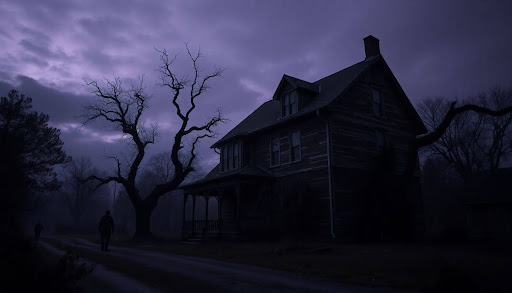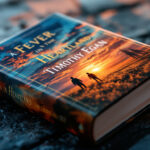Skeleton Crew by Stephen King – A Gripping Mix of Horror and Sci-Fi
Short story collections don’t always pack the punch of a full-length novel, but Skeleton Crew by Stephen King is an exception. With 22 tales that range from unsettling to downright terrifying, this book blends horror, sci-fi, and complex psychological themes in a way that only King can. Whether you’re a seasoned fan or new to his work, Skeleton Crew will pull you into worlds that provoke thought and test your nerves.
Overview of Skeleton Crew
First published in June 1985, Skeleton Crew is one of Stephen King’s most celebrated short story collections. This compilation showcases King’s ability to weave a variety of genres into gripping narratives that linger in your mind. Packed with 22 tales, it offers everything from pure horror to unsettling psychological stories, solidifying its place as a fan favorite. With works like The Mist as its cornerstone, the collection draws readers into a mix of terror and wonder. Let’s break down how King masterfully brings it all together in terms of themes and structure.
The Range of Genres and Themes
One thing Skeleton Crew does exceptionally well is showcasing the breadth of Stephen King’s creative range. The collection dips into traditional horror, science fiction, and psychological drama, pulling you into worlds that feel both alien and disturbingly familiar. Stories like The Mist blend survivalist themes with supernatural horror, while tales like The Jaunt dive headfirst into hard science fiction with a dark twist.
Common threads tie these genres together—King often explores human flaws, isolation, and survival under extreme circumstances. What happens when people are pushed to their limits? Can they maintain their humanity when faced with the unknown? King is not afraid to expose our vulnerabilities, holding up a mirror to the darker side of human nature. From the claustrophobic terror of being trapped in a supermarket (The Mist) to the psychological unraveling in The Monkey, the recurring theme is often how ordinary people confront extraordinary fear. Read more about the themes of Skeleton Crew.
Structure of the Collection
The structure of Skeleton Crew itself is another testament to Stephen King’s storytelling prowess. The collection contains both longer novellas like The Mist and shorter, punchier pieces—each crafted to fit the intensity of the story being told. This mix ensures there’s something for every type of reader.
Organized meticulously, King balances the pacing across the stories so readers aren’t overwhelmed. Starting with intensely gripping works like The Mist, the book eases into shorter tales like Here There Be Tygers and The Wedding Gig, giving breathing room between the heavier narratives. His ability to vary the tone keeps readers engaged from start to finish, making the entire collection feel like a curated experience rather than a random assortment. Explore more about the structure and organization of Skeleton Crew here.
Whether you’re a fan of eerie suspense or unsettling glimpses into human psychology, Skeleton Crew offers a well-rounded exploration of King’s talent in short-form storytelling. Each story serves as a piece of a larger puzzle, showcasing the sheer range that Stephen King brings to the literary world.
Standout Stories
Stephen King’s Skeleton Crew is packed with unforgettable tales, each exploring deeply human fears and emotions through richly crafted narratives. Here, we’ll highlight four standout stories that exemplify the book’s brilliance in horror and science fiction storytelling.
The Mist: Societal Breakdown and Survival
What happens when ordinary people are thrust into extraordinary circumstances? The Mist answers this with unsettling clarity. When a mysterious mist envelops a small Maine town, trapping residents in a supermarket, fear takes hold and logic begins to unravel. King uses this scenario to explore themes of societal collapse, mob mentality, and the fragility of human civility.
As the mist conceals grotesque, otherworldly creatures, the real monsters emerge from within the group. The division between those seeking rational solutions and others spiraling into religious fanaticism leads to shocking consequences. David Drayton, the story’s protagonist, acts as the everyman lens through which readers witness fear erode morality. The tension is as much psychological as it is physical. You find yourself wondering: What would you do in that situation? The Mist is a masterclass in brooding tension and commentary on human behavior under stress. Explore themes of fear and survival in The Mist here.
The Jaunt: Horror Meets Science Fiction
Teleportation has long been a dream of science fiction, but King’s The Jaunt turns this marvel into a waking nightmare. Set in a future where “Jaunting” revolutionizes space travel, this story begins with the promise of technological wonder and quickly plummets into existential dread. The chilling twist? While the body travels instantaneously, the mind experiences an endless void.
As readers, we’re thrust into an unsettling narrative that questions the cost of convenience. The story forces us to consider the unintended consequences of innovation. Psychologically haunting, The Jaunt delves into humanity’s relationship with advancement—and the dangerous curiosity that drives us to push boundaries. The surreal horror of eternity contrasted with the mundane promises of teleportation makes this story linger in your thoughts long after the final line. Learn more about King’s terrifying vision in The Jaunt.
Survivor Type: The Will to Survive
Perhaps one of King’s most disturbing stories, Survivor Type follows a disgraced surgeon who finds himself stranded on a deserted island. Despite the grisly premise—self-cannibalism—the real horror lies in the slow unraveling of the protagonist’s psyche. Through diary entries, we watch him descend from survivalist ingenuity to primal desperation.
This story is as much about the human spirit’s resilience as it is about its breaking point. The extreme lengths the character will go to stay alive prompt uncomfortable questions: How far would you go to survive? Gruesome and thought-provoking, Survivor Type is a visceral meditation on self-destruction and the cost of ambition. It’s a little stomach-churning, but that’s what makes it unforgettable. Read an analysis of Survivor Type here.
The Raft: Fear in Isolation
Fear thrives in isolation, and The Raft showcases this in its most primitive form. Four college friends swim out to a floating raft in a remote lake for a carefree outing, only to find themselves trapped by a strange, hungry creature lurking in the water. This amorphous, slick predator brings a slow and agonizing horror that the group is powerless to escape from.
King uses the confined space of the raft to magnify dread, turning the lake into a claustrophobic abyss teeming with inevitability. The story explores not just helplessness but the painful realization of one’s own mortality. Each moment is charged with adrenaline as the teens make futile attempts to survive. The sheer hopelessness mixed with gore cements The Raft as one of King’s most unsettling creations. Dive deeper into the themes of The Raft here.
Each of these stories dives headfirst into terror, challenging readers to face the darker sides of innovation, nature, and even humanity itself. These standout tales encapsulate why Stephen King’s short fiction remains impactful and timeless.
Recurring Motifs and Writing Style
Stephen King’s Skeleton Crew delivers a blend of storytelling techniques that bring his short stories to life. From his consistent use of first-person narration to his deeply flawed yet relatable characters, King’s craft ensures these tales resonate on personal and emotional levels while keeping the suspense alive. Let’s take a closer look at two key aspects of his writing style that stand out in this collection.
King’s Use of First-Person Narration
One of King’s most effective tools is his adaptability with perspective. In Skeleton Crew, first-person narration provides a sense of intimacy and urgency that few other styles can deliver. By placing us directly in the character’s mind, King doesn’t just tell a story—he immerses us in it. This technique amplifies emotions, such as fear and dread, making readers feel like active participants rather than distant observers.
Take, for instance, stories like Survivor Type, where the protagonist’s diary entries serve as the narrative framework. The first-person point of view draws readers directly into the harrowing isolation of the stranded surgeon. It’s not just what he does, but how he rationalizes it that makes the experience so visceral. You’re left questioning yourself: Would I make the same horrifying choices in his shoes?
This approach also allows for unreliable narrators, a common King hallmark. When a protagonist tells their own story, you only get their perspective—which can be skewed by fear, guilt, or madness. As readers, this keeps us engaged and guessing, ensuring the story’s tension remains high. For more insights, you can explore King’s innovative use of first-person techniques here.
Flawed Characters in Extreme Situations
King’s magic often lies in his characters. He doesn’t just build heroes and villains—he creates people who feel real, complete with insecurities, weaknesses, and contradictions. Skeleton Crew is full of characters trapped in unimaginable circumstances, and their personal flaws and vulnerabilities are what make their struggles relatable.
In The Mist, David Drayton isn’t the perfect leader. He grapples with fear and uncertainty, much like the others trapped in the supermarket. Yet it’s his humanity—his doubt and determination—that makes him a compelling protagonist. Similarly, in The Raft, the four college students aren’t paragons of virtue. They’re impulsive, naive, and, at times, selfish. But these flaws only heighten the terror as they attempt to survive the mysterious creature stalking them.
Why does this approach work so well? Flawed characters allow readers to see themselves in the story. Who among us doesn’t have regrets, insecurities, or moments of weakness? By putting these ordinary—albeit imperfect—individuals in extraordinary circumstances, King reminds us that heroism isn’t about being flawless. It’s about rising to the occasion, no matter how messy the process may be. You can learn more about King’s skill in shaping imperfect yet memorable characters here.
A recurring theme in King’s writing is that survival often comes at a personal cost. In facing their fears, his characters are forced to confront themselves. Whether they rise above or collapse under the pressure, the journey reveals layers of human complexity that leave a lasting impression.
Through the use of compelling perspectives and deeply humanized characters, Stephen King cements Skeleton Crew as much more than just a collection of horror tales—it’s a deep dive into what makes us tick when pushed to our limits.
Strengths and Weaknesses of the Collection
Stephen King’s Skeleton Crew has been hailed as one of his most compelling collections, but like any significant work, it comes with its share of strengths and weaknesses. While some stories shine as masterpieces of horror and science fiction, others falter under scrutiny, especially through the lens of contemporary readers.
Praise for Specific Stories
Certain stories in Skeleton Crew have become fan favorites, celebrated for their imaginative plots and gripping tension. Two standout tales, The Mist and The Jaunt, deserve special recognition.
- The Mist: This novella is arguably the crown jewel of the collection. It masterfully blends horror with social commentary as a small Maine town succumbs to panic when shrouded in a mysterious, monster-filled fog. The tension within the confines of the supermarket mirrors the chaos outside, making for an enthralling study of human behavior under pressure. Its pacing strikes a perfect balance between action and introspection, ensuring the story never feels rushed or drawn out. Learn more about The Mist’s thematic brilliance here.
- The Jaunt: A shining example of how science fiction can be both thrilling and deeply unsettling. This story explores the horrors of teleportation, but King takes it a step further by delving into the psychological and existential consequences of technological advances. The way The Jaunt toys with time and consciousness is not only terrifying but also thought-provoking. It’s a short but unforgettable tale that underscores King’s ability to craft layers of meaning in just a few pages. Explore an analysis of The Jaunt here.
These stories highlight King’s skill in immersing readers into his worlds, blending horror with relatable human struggles, and addressing timeless themes like fear, survival, and innovation.
Criticism of Certain Narratives
While Skeleton Crew includes a number of unforgettable stories, not every entry resonates as strongly. Some narratives have been critiqued for issues tied to pacing, depth, or content that might not age well.
- Pacing Problems: A few stories in the collection, such as The Wedding Gig, have been noted for feeling underdeveloped or lacking the tension typically expected of King’s work. These tales, while not without merit, sometimes leave readers wanting more meat on the bones of their narratives. Critics argue that the pacing can feel rushed, preventing deeper investment in the characters or plot. Discover more critiques of individual stories in Skeleton Crew.
- Outdated Themes and Problematic Elements: As with many older works, certain aspects of Skeleton Crew might feel out of touch with modern sensibilities. For instance, some character archetypes and dialog reflect attitudes of the 1980s that may not sit well with contemporary readers. Additionally, critiques of The Raft point out that the interpersonal dynamics among the characters can feel clichéd or unrelatable.
- Lack of Depth in Some Stories: Several shorter stories, such as Here There Be Tygers, have been criticized for being overly simplistic. While entertaining in concept, these tales may lack the layers of nuance that make King’s best works stand the test of time.
Despite these criticisms, it’s important to remember that Skeleton Crew remains a product of its era. Its imperfections only enhance the discussion around how Stephen King’s writing has evolved and how it continues to resonate with varied audiences. Read a nuanced review of the collection’s strengths and shortcomings here.
By highlighting both the high and low points of Skeleton Crew, readers can approach it with appreciation for its impact while acknowledging the elements that may not have aged as gracefully.
Impact and Legacy
Stephen King’s Skeleton Crew is more than just a collection of short stories—it’s a cornerstone in his body of work and an influential piece in the broader horror genre. Since its release in 1985, it has cemented itself as a prime example of how short-form storytelling can pack just as much emotional and psychological weight as novels. Let’s examine how Skeleton Crew has shaped both King’s career and the horror genre at large.
Influence on King’s Career
For fans of Stephen King, Skeleton Crew encapsulates the essence of his early writing. By showcasing his versatility through a variety of stories, King was able to demonstrate that his talent extended far beyond full-length novels like Carrie and The Shining. Each tale introduces unique characters, gripping conflicts, and settings that range from the mundane to the fantastical.
The success of Skeleton Crew strengthened his reputation as the “King of Horror.” Several stories, including The Mist and The Jaunt, have become cultural touchstones, inspiring adaptations and discussions about their unsettling themes. As a testament to its longevity, many of the stories within this collection continue to be studied and revisited by both readers and critics. Explore how Skeleton Crew marked a turning point in Stephen King’s legacy.
Contributions to the Horror Genre
Stephen King is often credited with modernizing horror, and Skeleton Crew is a prime example of this. Each story tackles universal fears, from the unknown lurking in the mist to the psychological horror of isolation. By blending supernatural elements with deeply human struggles, King made horror relatable and accessible to a wider audience.
King’s influence on horror doesn’t stop at his readers—it extends to fellow writers and filmmakers. His knack for embedding fear into ordinary settings, like a supermarket in The Mist, has inspired countless creators in the genre. Writers such as Ramsey Campbell and filmmakers like the team behind Stranger Things have cited King’s work as a cornerstone of their creative journeys. Read more about King’s influence on modern horror literature.
A Cultural Phenomenon
Beyond the literary world, Skeleton Crew has left an indelible mark on popular culture. Stories like The Raft and Survivor Type have become subjects of horror anthologies, TV adaptations, and podcast discussions. The themes explored in these tales resonate with audiences even decades later, reflecting how fear, survival, and human nature are timeless concerns.
The adaptability of these narratives underscores King’s talent for creating multifaceted stories. For instance, The Mist has been adapted into both a film and a TV series, showcasing its lasting appeal. Learn more about how Skeleton Crew stories have been adapted through the years.
Enduring Legacy
As part of Stephen King’s extensive bibliography, Skeleton Crew serves as a touchstone for understanding his evolution as a writer. It paved the way for future short story collections, including Four Past Midnight and Full Dark, No Stars.
Even today, the collection remains a favorite among fans, often viewed as King at his most raw and experimental. Whether you’re drawn to the heart-pounding suspense of The Mist or the grim existential dread of The Jaunt, there’s no denying the profound impact of this collection on readers and the horror genre alike. Discover more about King’s continuing legacy in horror and beyond.
Conclusion
Skeleton Crew stands as a testament to Stephen King’s ability to craft gripping stories that stay with readers long after they’ve turned the last page. With its mix of horror, science fiction, and heartfelt psychological themes, it offers something for every fan of thrilling narratives. Whether you’re drawn to the visceral horror of The Raft or the existential dread of The Jaunt, this collection showcases King’s mastery of short-form storytelling.
For both seasoned King enthusiasts and newcomers, this anthology provides a gateway into his unparalleled imagination. If you’ve been hesitant to dive into short stories, Skeleton Crew is the perfect excuse to explore their potential to shock, entertain, and provoke thought. Which story left the biggest impact on you? Share your thoughts and join the conversation—after all, the discussion is half the fun with a collection this layered.







